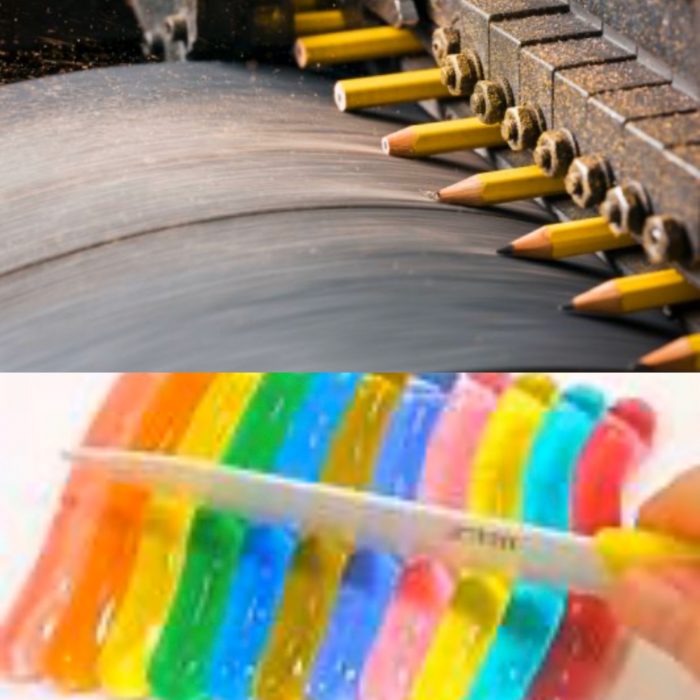Seven years ago I started noticing a pattern with my three young kids, where they would describe things to me and say “mom, isn’t that satisfying?”. They said this after popping packaging bubbles, or messing around with some materials in their playroom. Satisfying seemed a big word to use as a four-year-old, one word with a wide range of interpretations from feeling full to ribaldry. Just like I can’t stand it when technology companies call their software “robust”, spaghetti sauce is robust people, I was uncomfortable with my small child calling something satisfying that was clearly something trite and mundane. My generation used the word “awesome” too liberally, so the exaggeration is intergenerational.
I searched for the etymology of the work satisfying, and while I learned the root, which means literally to “do enough”, with a history of being used for reparations and to repay (“your gift of bread has satisfied your debt you owed me.”), I immediately jumped down the G-rated video rabbit hole of “satisfying”. Not only are there 118 million results, but the videos are also all it seems of “oddly satisfying videos” where you can see everything from a car running over twenty tubes of toothpaste to people making food, laying cement or power washing something all to the tune of New Age techno music. Intuitively I understand why these are satisfying, and remember fondly as a child watching videos of manufacturing plants and seeing the machines create newspapers or can peanut butter in harmony and in repetition: the videos provide a sense of order and task completion which for anyone who may come close to OCD (Obsessive Compulsive Disorder) tendencies, these videos are your mental repose. Though I didn’t understand the gooey videos amongst today’s “oddly satisfying videos” (e.g. hands dunked in a bowl of milky/paint-like substance).
Continuing with my children’s exploration of their sensory world they became obsessed, along with a billion other kids, with making and playing with slime. In 2017 Elmer’s Glue and borax got a big uptick in sales, as they are the primary ingredients for this DIY goo. They bought magnetic goo with their hard-earned money, and were often gifted by school or peers with “Smart Putty”. We even bought some slime from little kids at a farmers market, where these entrepreneurial kiddos replaced the lemonade with various permutations of homemade slime. The slime thing isn’t new: in the 1970s Mattel had a hit toy named Slime (tagline: “It’s gooey, drippy, oozy, cold ’n clammy!”).
While doing research for my book Nose Dive two years ago, I was reading a lot of research on our brains and how they evolve and change over time. I became convinced and wrote my theory out about why we are obsessed with scent these days, wishing that a neuroscientist reads my book and makes a formal case for this. Scent is one of those primitive senses like touch that have been relegated to the bottom of the science bucket in terms of seeking them out for answers to bigger problems. I think in fact that these senses are smart indicators of the health and wellness of humans. A peak moment when we are obsessed with slime, goo, scent and satisfying things begs for more research.
In my book, I theorize that our brains evolved where at different points of our social evolution, our brains focus shifts accordingly. For example, in the pre-19th century, we were making our food and manual labor was high, our brains were focused on the physical elements. When the industrial revolution happened, machines started doing the physical work and gave our body-brain a rest, which enabled our prefrontal cortex, or the cognitive powerhouse to go into full drive. We spent years and years thinking, thinking and thinking forgetting about body consciousness, so much so smell and touch fell off the science map. We thought so much and so “well” that we invented the computer. The computer, as the machines before it gave relief to our bodies, gave relief to our minds. So the computer revolution has moved the focus in our brains from the front thinking brain to the back lizard brain. Today the captain of our ships, for better or worse, is our limbic system. As I shared in a panel I was speaking on in Milan last Spring to an audience of niche fragrant businesses I told them they were in the right business, as the olfactory is the quickest hit to our limbic brains, and as the consumer is proving we are continually searching for new scents whether in fragrance or flavors.
With our dinosaur, lizard, primitive brain in charge over our thinking brain, you can see clearly now why stress and anxiety are running so high, and why nuanced thinking and dialogue has taken a back seat to polarized, aggressive and combative discourse. You wonder why on earth would adult anxiety and political spectrums be an issue for the kid set? It turns out anxiety and fear are contagious, so even if you think you are hiding it from your students or children, we humans can smell fear. It’s no wonder Youtube is brimming with solutions to calm our nerves.
Enter the anxiety beast slayer ASMR. The earliest article I could find addressing this phenomenon is from 2011 in the British paper “The Independent”, it’s an article about people watching and enjoying repeatedly, a video of a woman folding towels for twenty minutes. ASMR, or Autonomous Sensory Meridian Response, is a sensation in your brain that is supposedly triggered by things such as whispers, soft tapping, chewing and a variety of other noises. It has launched the career of Youtube stars old and young, and you can find anything ASMR style on the web whether it’s simply bedtime stories whispered or a marathon staccato stream of “100 ASMR triggers in two minutes” by a 12-year old Youtube star.
While there are mighty fans there are others, including myself, where these delightful and “tingling sounds” of ASMR cause misophonia. Listening to The French Whisperer read the Biography of Joan of Arc makes me howl with laughter, and all of the chewing and tapping business makes me bonkers. My poor family knows I can not stand the sound of chewing, tapping, etc. – I’ve learned coping mechanisms in my old age, but I also frequently call for “silent breakfast” in my home, for many reasons. I was thrilled and comforted when I watched the movie Phantom Thread where Jeremy Irons’ character commands silence during his morning tea and breakfast. Funny but true – we are all wired differently to intake these sounds, so if you must, carry earplugs everywhere, and maybe eat alone.
The biochemistry of ASMR and satisfying videos has not been unraveled, though I am sure scientists have been hired to parse this out so that consumer behavior vis a vis the senses can be predicted. After reading this, you will hopefully do a little ASMR search, watch a ridiculous video or two, or maybe even a whole movie such as A Quiet Place seemingly designed for highly sensitive viewers. You may also now understand while your fellow adult passenger watched hours of Bob Ross videos on a recent transcontinental flight. For endurance ASMR fans, I recommend 10-hours of Arctic sounds, it’s indeed quite chill. I’m curious about your thoughts on these sensory trends, please be in touch and thanks for reading!
@mindmarrow (instagram)


 Share on bsky
Share on bsky





Read 0 comments and reply